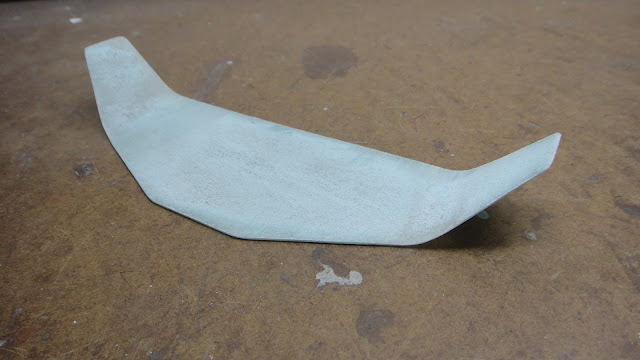The Gyrokite project continues today with these photos of the parts that I made on my Makerbot 3D printer of the landing skid assembly.
This is one of the landing skids for the Gyrokite. Both skids are exactly the same and I designed them to be symmetrical in shape so that I did not need to have a left and right skid for the project. The skid is 1/4 inch square at the base and is 6 inches long by 7/8ths of an inch tall.
This is the skids by themselves as they would be set up for the assembly of the landing skids.
Here the cross members are added to the assembly with 10-32 bolts and nuts. The nuts are inserted into receiving slots in the landing skids and the bolts then are inserted through mounting holes in the cross members to hold it all together.
These last two photos show the addition of the internal mast framework for the rotor blades mounting shaft. This part has internal slots again to mount the part to the rear cross member with more 10-32 hardware. On the sides of the mast framework are additional mounting holes with fuselage. Internal nuts are recessed into matching holes to hold the nuts in place when attaching the fuselage side to the internal framework. This will make more sense once the final assembly has taken place and I can get photos of it all going together posted here.
All of the parts for the landing skid assembly that I have shown you here are not filled solid with plastic from the Makerbot printer. In actuality the parts are internally crisscrossed with a honeycomb of plastic to give each part strength yet make them lightweight. This will help a lot in keeping the weight down on the entire assembly when I want to fly it.
On another note about this project as it was quite windy here yesterday I did a little test of one of the main rotors from a suggestion made by my brother Dennis. I took the rotor shaft and one of the rotor blades and just held them at arms length into the wind to see how well it would spin. To put it simply....WOW! I was just barely able to hold it away from my body as the blade being three feet long was whipping around on the shaft at quite a speed. Even enough speed to make an actual helicopter sound as it spun up in revolutions. WHOOP, WHOOP, WHOOP! I am more encouraged now that this project has a real chance of working out the way I have planned. If all else fails that I do not get enough lift from the 36 inch rotors I can always make them longer and try again. But for now I think these will work out just fine. A good test to be sure and another good day at the Tinker's Workshop!



















































